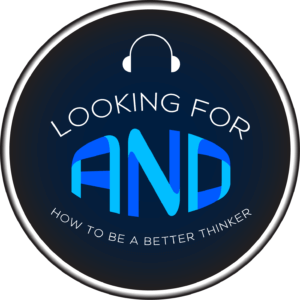Nobel laureate in both chemistry and peace, Linus Pauling, once said of creativity and innovation, “The best way to get a good idea is to have a lot of ideas.” In corporate America, we often here managers say, “I want to hear some ideas. Let’s brainstorm…” when they are in need of some creativity. Their thinking is that the ideas will just flow from a group of people sitting in the room. While generating a lot of ideas through brainstorming can help, it’s not the only way to make a team creative. And, asking people to “brainstorm” can actually be counterproductive…
In his insightful book, The Medici Effect, author, consultant and entrepreneur, Frans Johansson, set out to find the secrets to creativity and innovation. What he found was that the most inventive people and teams innovate by stepping into the Intersection – a place where different cultures, fields and disciplines can produce an explosion of new ideas.
 Johansson defines intersectional ideas as those that take leaps in new directions, open entirely new fields and (in some cases) generate a source of innovation for years and a group of followers. And, the good news is that intersections are on the rise as a result of three forces:
Johansson defines intersectional ideas as those that take leaps in new directions, open entirely new fields and (in some cases) generate a source of innovation for years and a group of followers. And, the good news is that intersections are on the rise as a result of three forces:
- The free movement of people around the world (both physically and electronically)
- Convergence of scientific fields
- The leap of computation
When we gain a level of expertise in a particular domain, we can quickly see associations within the domain that help us solve problems, quickly and efficiently. Another way to look at these associations, however, is that they can become barriers to truly creative thinking. Experts in a given field tend to think within their given domain. The Intersection lowers these barriers as it exposes us to new ways of seeing old information. Johansson offers the following tips for making barriers fall:
- Cultures – Expose yourself to a range of cultures. You are less likely to be attached to existing ways of seeing the world.
- Learn Differently – Some of the most creative people educate themselves intensely. They excel in one field then try to conquer another.
- Multiple Perspectives – Try thinking about something from a new perspective. One trick is to create “reverse assumptions.” If you’re thinking of a opening new restaurant you may want to imagine one with no menus and free food.
One of the key concepts echoes Pauling’s thoughts from above – the most successful innovators produce a ton of ideas. We tend to focus on the great works of people like Steve Jobs, Johann Sebastian Bach and Albert Einstein. Jobs missed on more than a couple of ideas (think Apple Lisa). We only listen to a small fraction of Bach’s music and Einstein wrote some pretty poor scientific papers. The common thread, however, is that they persevered and continued to generate new ideas even after the ‘bad’ ones flopped. In fact, the best predictor of a Nobel Prize winner is the number of papers a person publishes.
One of my favorite tips for generating lots of ideas is to have a target number. For example, if you need to imagine the library of the future (one of my clients is doing this, now!), you may want to generate 30 new ideas in the next five minutes. It’s not easy but it helps produce a lot of ideas. If you want to do this in a team environment, simply asking the group to produce 30 ideas will probably not produce the creativity you desire as adults are going to self-censor for fear of producing ‘dumb’ ideas.
To overcome this, try asking people to write down their ideas on individual pieces of paper. Put them in the middle of the table and instruct them build on each idea. You will get more ideas and more ideas that are not conventional. And, be careful of putting time pressure on your team. People are less creative under pressure but they think they are actually more creative.
Some additional tips for innovation and creativity:
- Incubate – After thinking intensely about a problem or an idea, let it go for a period of time. This gives your subconscious a chance to work on it.
- Mistakes – Making mistakes is inevitable and it is an important part of the process. Thomas Edison was known to have said, “I have not failed. I’ve just found 10,000 ways that won’t work.”
- Reward Failure – On a similar note, innovative companies are more likely to have ‘bad idea’ awards or parties to celebrate the effort. They punish inaction and reward failure.
Being truly creative is risky business. The more we advance in our careers the less likely we are to expose ourselves with a bad idea. But, risk is inherent in the process and a growth mindset can help you re-frame the risk into a learning opportunity. Johansson writes that escaping our fears may not always be possible but acknowledging the role that failure plays can lessen the fear. And, in the words of Mark Twain, “Courage is resistance to fear, mastery of fear, not absence of fear.”


